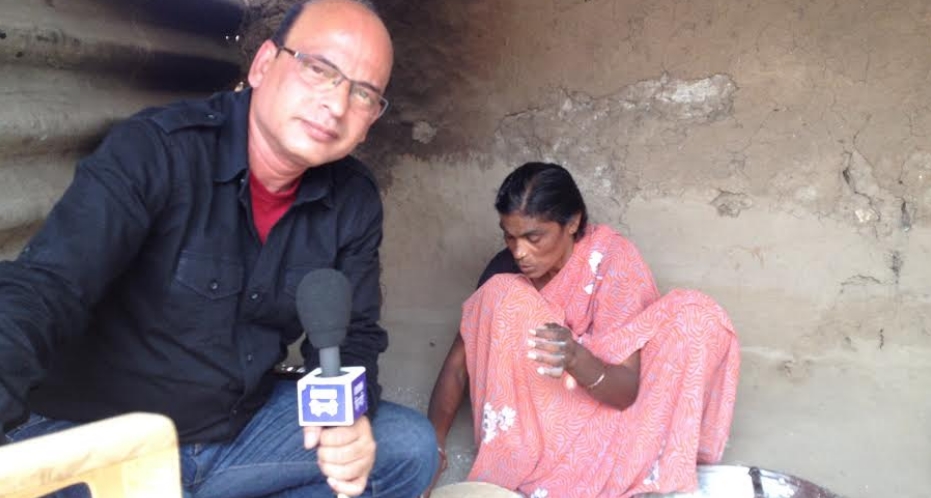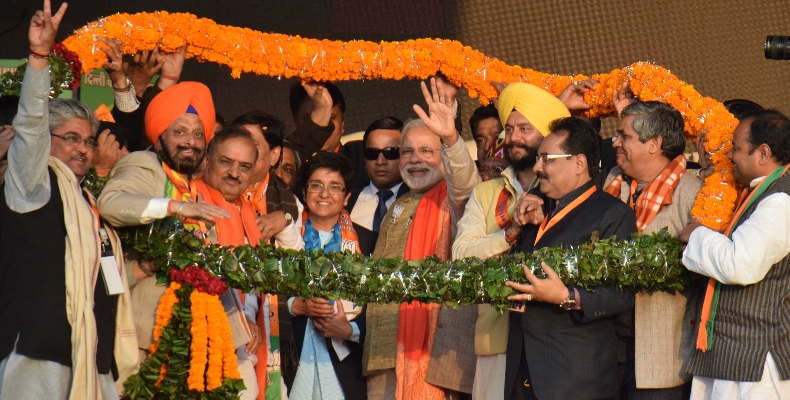Driving commercial and political engagement between Asia, the Middle East and Europe
Driving commercial and political engagement between Asia, the Middle East and Europe
Driving commercial and political engagement between Asia, the Middle East and Europe

Recent bilateral relations between India and Britain have been positive but they have lacked energy and excitement. The two countries have been lumbering along in the same way the Indo-US relations were before the big ticket civilian nuclear agreement was signed during President George W Bush’s visit to India in 2006. The nuclear deal breathed a new life into the Indo-US ties.
Indian Prime Minister Narendra Modi’s visit to the UK (12-14 November) is long awaited on both sides but will it invigorate the partnership? Former diplomats in New Delhi argue that only regular summits will take the bonds to the next level or build the ‘partnership of choice’ that British Prime Minister David Cameron has often advocated. Mr Modi’s visit, however, is being seen as a step in the right direction, considering the last Indian Prime Minister to make an official visit to the UK was Dr Manmohan Singh in 2006.
But some analysts are of the opinion that Britain needs to see India in a new light because the India of old has moved on from the colonial period and even the cold war era. Today it boasts of close friends whose might and clouts are much bigger than the UK’s.
When I was growing up in the eastern state of Bihar in India in the 1970s we celebrated Independence Day with pomp. Many freedom fighters were still alive in India who narrated anecdotes of their heroic contributions to drive the British colonial power out of the country.
And yet many older people at the time reminisced the Raj days with nostalgia. They missed the order and rule of law. Some words were even blasphemous, as an octogenarian Bengali gentleman once uttered in my presence: “I wish the Britishers (Britons) were back.”
In the recent past I met some Parsi men and women in Mumbai who seemed to be living in mourning since the Raj days were over. Now most of them have died and those who are still alive seem to be living in a museum of time. These Parsis loved the Western lifestyle under the British Raj.
Indeed the colonial mindset used to extend to the society in general. If you were an Indian Oxford graduate, you got an attractive job in an Indian newspaper. Much of the public in my boyhood in the 1970s were not anti-British. There were emotional ties with Britain, at least for the English-speaking Indian elite who until the 1990s often visited England to satisfy their intellectual and cultural quest.
During my years in London (1995 – 2004), I met a few Britons who went to Heathrow without a visa to catch a flight to India as if they were headed to Manchester or Edinburgh. One of them confessed to me he believed he didn’t need a visa to India because he thought ‘India was still our playground’.
That India exists but only in our collective memories.
In the real world the India of old is gone.
A new India is born which is confident and even cocky. Its youth have swagger in their step, its leaders’ dream of being a world power. It’s an Americanised India.
Fast-food chains, such as KFC, McDonald’s, Pizza Hut and Starbucks in India’s glittering shopping malls, spacious food courts and crowded small-town bazaars are seen as a sign of globalisation. But they are, as well as the big presence of Amazon, Facebook and Google, part of the Americanisation of India.
In this new India today there are few who dream of going to Oxford or Cambridge and fewer who understand and follow the Queen’s English or ‘received pronunciation’. It prides itself on having its own Silicon Valley and its own variety of IT parks. It looks towards Mark Zuckerberg, Steve Jobs and Larry Page for inspiration. Indeed every Indian techie wants to be the next Sundar Pichai (CEO of Google) or Satya Nadella (CEO of Microsoft).
The aspirations of this new India were best illustrated by the country’s tech-savvy Prime Minister Narendra Modi himself who seemed proud to engage with Zuckerberg and other IT honchos during his recent trip to the US.

Prime Minister Narendra Modi addresses a public meeting in India in January 2015
The serious business of ‘doubling’ the bilateral trade and enhancing economic ties will surely be discussed during his time in the UK – but his public speech at the largely Indian London suburb of Wembley will probably steal the headlines, at least in India.
Despite UK Prime Minister David Cameron’s declared aim of doubling the UK-India bilateral trade, it declined by 9.37 percent to US$14.34 billion in 2014-15 compared with the corresponding period last year. UK exports to India decreased by nearly 17 percent during this period and India’s exports to the UK declined by 4.67 percent. The bilateral trade in goods has been hovering at US$13-15 billion over the last five years.
During this period China has become India’s biggest trading partner followed closely by the US and UAE. Even Germany is ahead of the UK.
As a matter of fact, there is nothing India needs from the UK that it cannot buy elsewhere and cheaper.
In the same way India is not a manufacturing hub in the mould of China which produces everything from combs to computers for European markets.
Private businesses between the two countries, however, have more than made up for official lethargy in the trade relations. The Tata Group (owners of Jaguar Land Rover) is at the forefront of nearly 1,000 Indian companies who have invested in the UK, creating thousands of jobs. British financial institutions have invested heavily in India between 2000 and 2015, thus becoming the third largest FDI source in India after Mauritius and Singapore.
Britain has lost out to the US in terms of attracting Indian students to its universities. Their current number is just over 19,000 while Indian students are flocking to American campuses – their recent numbers are going beyond 130,000. Still, the number of Indian students in Britain is the second largest among foreign students.
Britain is still capable of offering a lot to India. It remains a favoured destination for global financial institutions. Its insurance companies are advanced and experienced. Its universities are still centres of excellence.
Of course India offers Britain a huge market to explore. Under its Make in India scheme India has opened its defence sector to foreign investors and Britain is likely to give this area some serious attention.
One cannot fault the British Prime Minister for trying to improve the trade links. Yet his initiatives to date have had limited success. The reality is, Britain has not been wooing India as hard as Japan, the US, Germany and even China have.
This week provides an opportunity and a challenge for Mr Cameron to reach out to India with some new big ticket ideas that will secure the ‘partnership of choice’ he wants.
Zubair Ahmed is a Bilingual Correspondent for BBC World Service News currently based in New Delhi. He can be found tweeting @Zubair_BBC here. He has been with the BBC World Service for the last 20 years working in a range of cities including Delhi, London, Washington and Mumbai.
To read an analysis of Narendra Modi’s achievements since he became Indian Prime Minister by Ravi Srinivasan read his story There are two Indias and two Modi’s here.
To read the chairman of HSBC Naina Lal Kidwai’s assessment of Narendra Modi’s time in government click here.
To read a range of analysis of Narendra Modi in various stories on the Asia House website click here.
